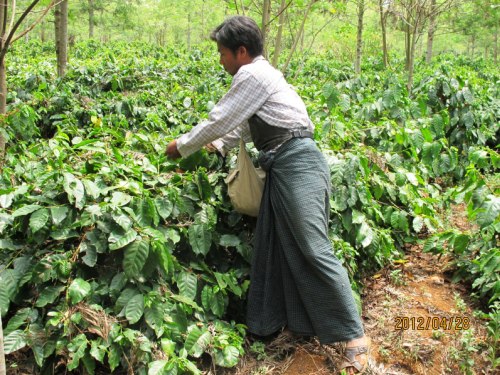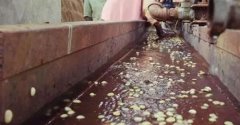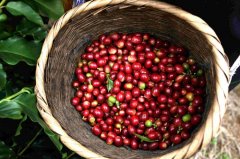Introduction of Ethiopian caffeine content sun-dried Shaquisol G1 low-caffeine coffee
For professional baristas, please follow the coffee workshop (Wechat official account cafe_style)

Ethiopian low-caffeine series Shakiso G1 sun
Ethiopia Decaf Shakisso G1 Natural
0.1% very low caffeine is very refreshing.
Mountain Water Decaf uses mountain spring water from Mexico's highest peak, Pico de Orizaba (5500m above sea level), to remove caffeine. It belongs to a non-chemical decaffeinated process, similar to the Swiss water treatment model, except that Mountain Water pays more attention to restoring the original flavor of coffee, especially the "positive" flavor.
Billed as 100% chemical-free, processed coffee beans contain less than 0.1% caffeine after roasting (in line with Canadian and international standards. Decaf coffee is required to contain no more than 0.3% caffeine in brewed coffee. That means no more than 5 milligrams of caffeine in a cup of decaf.
Shaqisuo is the most attractive micro-producing area in the Guji producing area, which is located in the southeast of Yejia Shifei, with an average altitude of more than 1800 meters. The fertile black soil (Vertisol) and a significant temperature difference between day and night make the local have all kinds of local conditions for producing high-quality coffee.

The sources of local coffee production almost all belong to the form of individual small farmers. At the arrival of the production season, the ripe red transparent berries from their neighbors are picked and sent to the processing plant, and placed on a well-ventilated African scaffolding to control the temperature and fermentation degree. After the pulp is removed, the water content is reduced to between 11.5% and 12%, and then exported through the competitive bidding system of the ECX Ethiopia Commodity Exchange when the post-processing and static operation are completed.
Palate description: classic sun style, ripe fruit flavor, peach and mixed berry, cocoa, long, lively and varied fruit.
36 aromas of coffee: Maple syrup, lemon and citrus, honey, cream, coffee flowers
Important Notice :
前街咖啡 FrontStreet Coffee has moved to new addredd:
FrontStreet Coffee Address: 315,Donghua East Road,GuangZhou
Tel:020 38364473
- Prev

Introduction to the flavor and taste of Kenyan coffee micro-batch boutique Qigushu AA TOP coffee
Professional barista exchanges please follow the coffee workshop (Wechat official account cafe_style) Kenya _ Qigushu AA TOP Kenya Kiaguthu AA TOP cup testers highly recommended a Kenyan micro-batch boutique coffee Kenya boutique coffee industry is different from the general, mostly in the form of a combination of small farmers, wet treatment plants and cooperatives, farmers will harvest coffee cherries
- Next

Introduction of St. Augustine Culture in Huilan Coffee producing area
Professional barista exchanges please follow the coffee workshop (Wechat official account cafe_style) Columbia-Huilan producing area-St. Augustine Colombia Huila San Agustin has won the SCAA annual championship affirmation! Huila is a very important coffee producing area in Colombia. coffee grows on the slope of the canyon formed by the western seaside mountains and the eastern mountains, among which San
Related
- Beginners will see the "Coffee pull flower" guide!
- What is the difference between ice blog purified milk and ordinary milk coffee?
- Why is the Philippines the largest producer of crops in Liberia?
- For coffee extraction, should the fine powder be retained?
- How does extracted espresso fill pressed powder? How much strength does it take to press the powder?
- How to make jasmine cold extract coffee? Is the jasmine + latte good?
- Will this little toy really make the coffee taste better? How does Lily Drip affect coffee extraction?
- Will the action of slapping the filter cup also affect coffee extraction?
- What's the difference between powder-to-water ratio and powder-to-liquid ratio?
- What is the Ethiopian local species? What does it have to do with Heirloom native species?

